We carry out paraffin therapy at home
Paraffin therapy is a natural and effective procedure that helps not only eliminate external defects and imperfections, but also has a therapeutic effect. The technique is based on the use of a special paraffin film, which creates a greenhouse effect. Initially, liquid paraffin was used as a massage agent in post-traumatic rehabilitation, for injuries and muscle strains. However, practical research into its action has led to the fact that this technique is now successfully used in cosmetology. Many people perform paraffin therapy at home.
What is the effect of paraffin therapy
Paraffin therapy is used mainly for hands during a special manicure. However, the procedure is also used for the skin of the face, legs and other parts of the body, for example, paraffin wraps for.
Result of manipulations:
- Skin whitening;
- Rejuvenation and cleansing of the skin;
- Powerful hydration;
- Protection against cracks and dryness;
- Elimination of gravitational ptosis and double chin;
- Correction of facial wrinkles;
- Lymphatic drainage effect.
Indications for use of the technique
Indications for paraffin therapy are divided into cosmetic and medical. Medical indications include the following diseases:
- Dysfunctions of the musculoskeletal system (arthritis, radiculitis, fractures, sprains and ligament tears);
- Skin diseases;
- Varicose veins;
- Trophic ulcers;
- Frostbite and burns;
- Gynecological diseases in women;
- Severe diseases of internal organs;
- Polio.
Cosmetic procedures are performed for the following problems:
- Severe dry skin;
- Tendency to swelling;
- Age-related changes (ptosis of the oval face, double chin);
- Premature aging;
- Expression wrinkles;
- Deep creases and folds;
- Aging of the hands;
- Cellulite;
- Cicatricial changes in the skin.
About cosmetic paraffin
What is cosmetic paraffin?
Cosmetic paraffin is distinguished by powerful pre-cleaning from harmful impurities and dyes. It belongs to premium class products. Often, complexes of vitamins, minerals and trace elements are added to it. There is cosmetic paraffin based on honey, fruit, oil and vegetable. Cosmetic paraffin is aimed at eliminating signs of withering and aging of the skin, deeply nourishing it, moisturizing and improving its health.
How much paraffin is needed for paraffin therapy and how often is it replaced and the bathtub cleaned?
The amount of cosmetic paraffin is calculated per procedure, taking into account the area of application. To carry out the procedure on the hands, on average you will need 150-200 g of product. For the face you will need approximately the same amount, given its mandatory application in several layers.
Changing paraffin should be accompanied by thorough cleaning of the bath. The material should be changed according to the instructions, but this should not be done too often - some companies recommend replacing every 25-30 uses, some 2-3 times a year.
The bath for procedures is cleaned when replacing paraffin, or if sediment has formed at the bottom. To do this, turn off the device and wait until the paraffin hardens well. Then run the bath for a few minutes to allow the edges of the paraffin to melt. Now carefully pry up the paraffin monolith and remove it. All that remains is to remove the remaining product with a napkin, wash the container, disinfect and dry. If you want to reuse the removed cosmetic wax, first scrape off the sediment from the bottom.
Which paraffin to choose for home paraffin therapy?
Paraffin should be selected depending on the purpose of use. For allergy sufferers and people suffering from inflammatory processes, paraffin based on peach oil is suitable. Paraffin with the addition of tocopherol and tea rose extract is excellent for SPA treatments aimed at treating the skin of the hands and feet. Paraffin with citrus additives has an additional nourishing effect and is suitable for the treatment of hands, feet and body. The chocolate product ensures skin regeneration and renewal at the cellular level.
How to reheat?
A special bath is usually used to heat the paraffin. An alternative is a regular water bath. The container with paraffin is placed on a colander, which is located above the steam of boiling water. This may take a little longer, but if a special device is not available, steam heating is also suitable. With this type of heating, care must be taken to ensure that no water gets into the paraffin.
Preparing for paraffin therapy at home
How to do paraffin therapy at home and what is required for this?
- Cosmetic purified paraffin;
- Special bath, heater or items for a steam bath;
- Gauze face mask;
- Protective cellophane bags;
- Thermal gloves and thermal socks (for hand and foot therapy);
- Moisturizing nourishing cream or serum;
- Scrub;
- Brush.
Step-by-step self-execution of paraffin therapy
Paraffin therapy for hands at home:
- Melt the paraffin until liquid;
- Massage your hands with a special rough mitten, scrub or other abrasive particles; if desired, you can apply a care product;
- Dip the brushes into the liquid and immediately remove them. Repeat the action at intervals of 5-10 seconds to form thick paraffin gloves on your hands. If your skin is too sensitive, you can first apply the product with a brush and then dip it into the bath. True, for this manipulation you need an assistant.
- Put cellophane gloves on your hands or wrap them in several layers of cling film;
- Next, put on thermal gloves;
- Wait at least 20 minutes, remove gloves and film, remove paraffin. Dispose of it, since reuse is not intended;
- Apply cream to skin.
Paraffin therapy for feet at home:
- Melt the paraffin, at this time preparing the legs for the procedure;
- Thoroughly clean your feet with a scrub and disinfect with lotion. It is advisable that a professional pedicure be performed before paraffin therapy. However, this is not necessary, since the procedure softens the skin and eliminates the need to trim the rough skin of the feet;
- Adjust the temperature of the heated liquid. Paraffin must correspond to the maximum tolerable temperature, otherwise you may get burned;
- Place your feet in the bath and quickly remove them. At this time, a thin film should be visible on the feet. Repeat the manipulations at intervals of several seconds;
- Wrap the legs in plastic or cling film, creating an additional greenhouse effect;
- Put warm wool socks on your feet and wait half an hour;
- Remove paraffin from feet after this time;
- Apply moisturizing cream to your feet.
Paraffin therapy for feet is best done in the evening, just before bed. After the procedure, the legs should rest and be in a relaxed state.
If you have problems with the skin of your feet, you should consult a specialist before paraffin therapy. Perhaps the podiatrist will identify contraindications to the procedure.
Carrying out paraffin therapy for the face:
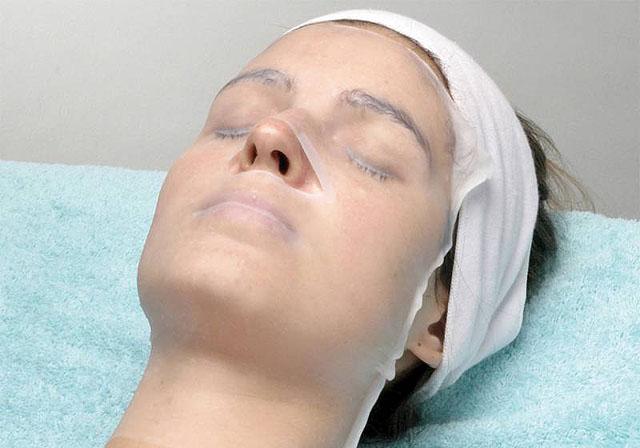
- Melt the paraffin to a temperature of 50-55 degrees;
- Pre-cleanse your face with a light peeling or scrub. Apply nourishing cream to it. The more the cream is enriched with useful substances, the better the effect of paraffin therapy;
- Apply a viscous mass of molten paraffin to the face using a coarse brush in a thin and even layer;
- Place a gauze mask or napkin on your face;
- Wait a few seconds, apply a second layer. Repeat 5-7 times. The mask and napkin are used exclusively for the first layer;
- After waiting for 30-40 minutes, remove the paraffin mass from the face from bottom to top;
- Apply skin care product according to your skin type.
Paraffin therapy on the body is carried out using applications applied to problem areas (stomach, thighs).
Frequency and dosage of sessions
For medicinal purposes: a course of 15-20 procedures is prescribed with a time interval of one day, or on a daily basis, depending on the purpose of application and treatment. Repeated sessions can be carried out after 1.5-2 months.
For cosmetic purposes: The main course for manicure is 10 sessions. The procedure can be repeated once every two to three weeks to maintain the achieved result. During the cold season, more paraffin therapy sessions may be required. The foot procedure is performed once a week. To rejuvenate the face, it is recommended to perform manipulations 1-2 times a week until the desired result appears. Maintenance procedures are performed once every few weeks.
Contraindications
Despite the wide range of healing and rejuvenating properties, the paraffin therapy procedure, both at home and professionally, has its contraindications:
- High blood pressure;
- Ischemic disease and myocardial infarction;
- Liver dysfunctions;
- Cirrhosis;
- Inflammatory processes;
- Chronic diseases of internal organs in the acute stage;
- Chronic glomerulonephritis;
- Angina;
- Atherosclerosis;
- Open wounds and fistulas;
- Purulent inflammations and other skin diseases;
- Telangiectasia;
- Hypertrichosis;
- Diabetes;
- Allergic reactions and individual intolerance to components.
The thermal paraffin therapy procedure has many beneficial functions for the skin of the face and body. It is considered the easiest and most pleasant, and can be done either by a specialist or at home. Paraffin therapy is especially relevant in the winter season, when the skin is especially susceptible to thinning and chapping. The therapeutic and cosmetological effect is observed after the first session.


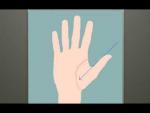

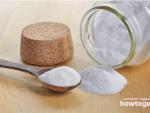


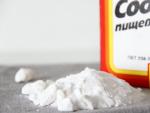
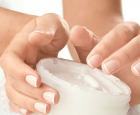 Nail care
Nail care Prom hairstyle for long hair
Prom hairstyle for long hair 18 wonderful New Year cards that even a child can make
18 wonderful New Year cards that even a child can make The best set of exercises for morning exercises
The best set of exercises for morning exercises